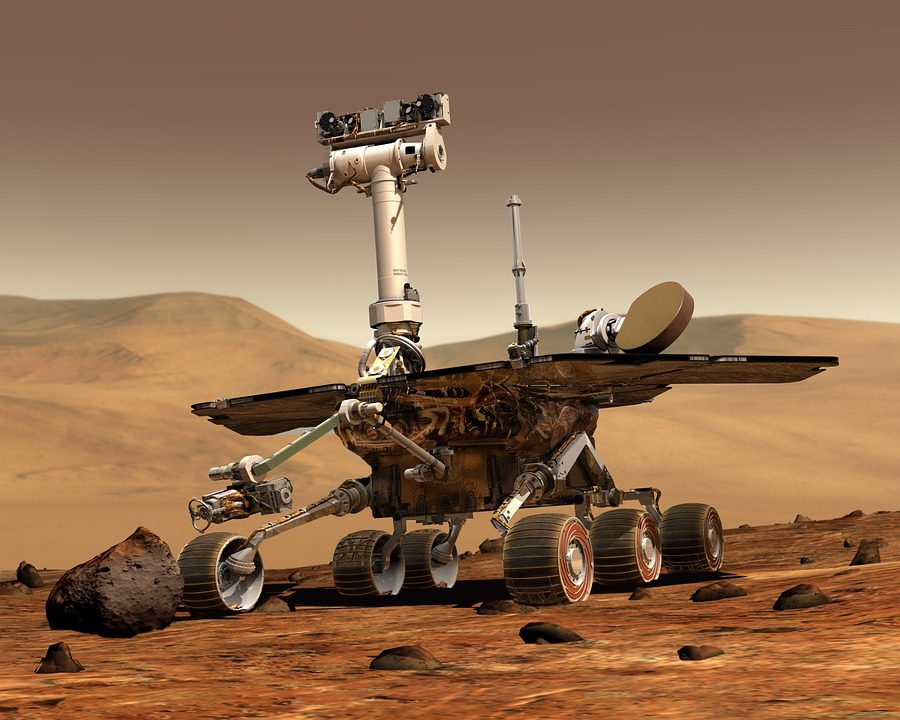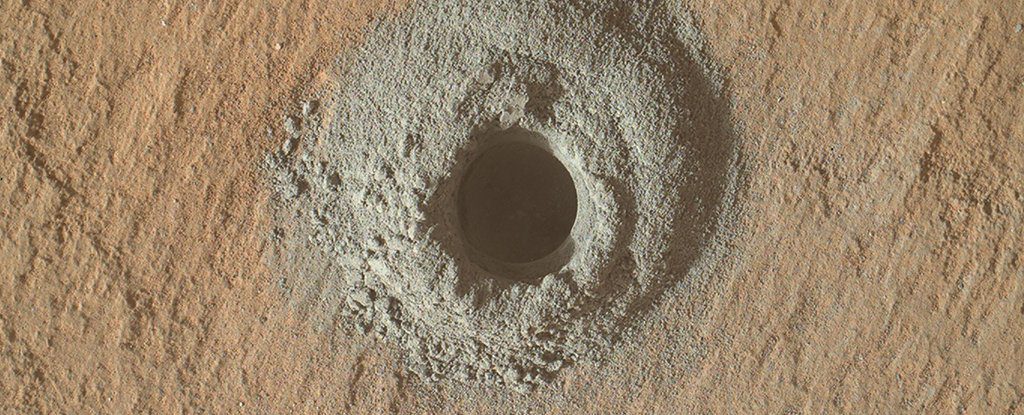As it’s the basis for all life on Earth, detecting carbon on other planets usually gets scientists thrilled – and the Curiosity Rover on Mars has uncovered a unique blend of the chemical element that may conceivably indicate the presence of extraterrestrial life.
That’s by no means guaranteed, but it’s a possibility.
It’s one of three distinct scenarios that astronomers believe would have created the carbon noticed in the sand in the Gale crater, gathered across nine years from August 2012 to July 2021.
Twenty-four powder samples were heated by Curiosity to separate individual molecules, indicating a substantial variance in terms of the combination of carbon 12 and carbon 13 isotopes: the two stable carbon isotopes that potentially explain how the carbon cycle may have evolved over time.
What makes these facts so meaningful – some samples enriched with carbon 13, and others highly depleted – is that they refer to unusual mechanisms unlike those formed by the carbon cycle on Earth.
Christopher House, a geoscientist from Pennsylvania State University, stated:
“The amounts of carbon 12 and carbon 13 in our Solar System are the amounts that existed at the formation of the Solar System. Both exist in everything, but because carbon 12 reacts more quickly than carbon 13, looking at the relative amounts of each in samples can reveal the carbon cycle.”
A massive molecular cloud of dust might explain the carbon signatures.
The Solar System goes through one of them every couple of hundred million years or so, and the cooling impact it causes leaves carbon deposits in its wake.
The team thinks this is a conceivable hypothesis that requires additional examination.

On the other hand, the conversion of CO2 to organic compounds (such as formaldehyde) via abiotic (non-biological) processes could explain what Curiosity discovered – in this case, ultraviolet light could have been the catalyst.
It’s something scientists have speculated about before, but more research is needed to confirm whether or not this is the case.
That leaves the third alternative open, which is that either UV radiation or bacteria transformed methane generated by biological processes once upon a time – that we’re looking at carbon created as a byproduct of life.
We’ll need more proof to know for sure, much as with the other two options, but there are some similarities on Earth.
The significantly low samples in carbon 13 are similar to samples recovered from sediment in Australia that is 2.7 billion years old, as stated by House.
He adds that those samples were created by biological activity when ancient microbial mats ate methane. Still, scientists can’t conclude that on Mars since it’s a planet that may have evolved out of different materials and processes than Earth.
Curiosity’s Mission Continues
The eventual finding of the remnants of microbial mats, large methane plumes, or signs of long-lost glaciers would help the researchers figure out which one of these three possibilities is most plausible.
For the time being, we don’t know enough about Mars, and we can’t draw any judgments about how this carbon signatures formed.
More drilling is planned at the site where several of these samples were gathered in less than a month.
Curiosity was lately joined by the Perseverance rover, which intends to return Martian rocks to Earth rather than conduct experiments on them on site.
Expect these two robotic explorers to reveal a lot more in the coming years.
House adds that all three hypotheses lead to an extraordinary carbon cycle unlike anything on Earth today. However, researchers need to collect more data to determine which of these explanations is correct.
He added scientists are being careful in their interpretation, which is the wisest course of action when investigating another world.
The study appeared in the journal PNAS.












Leave a Reply